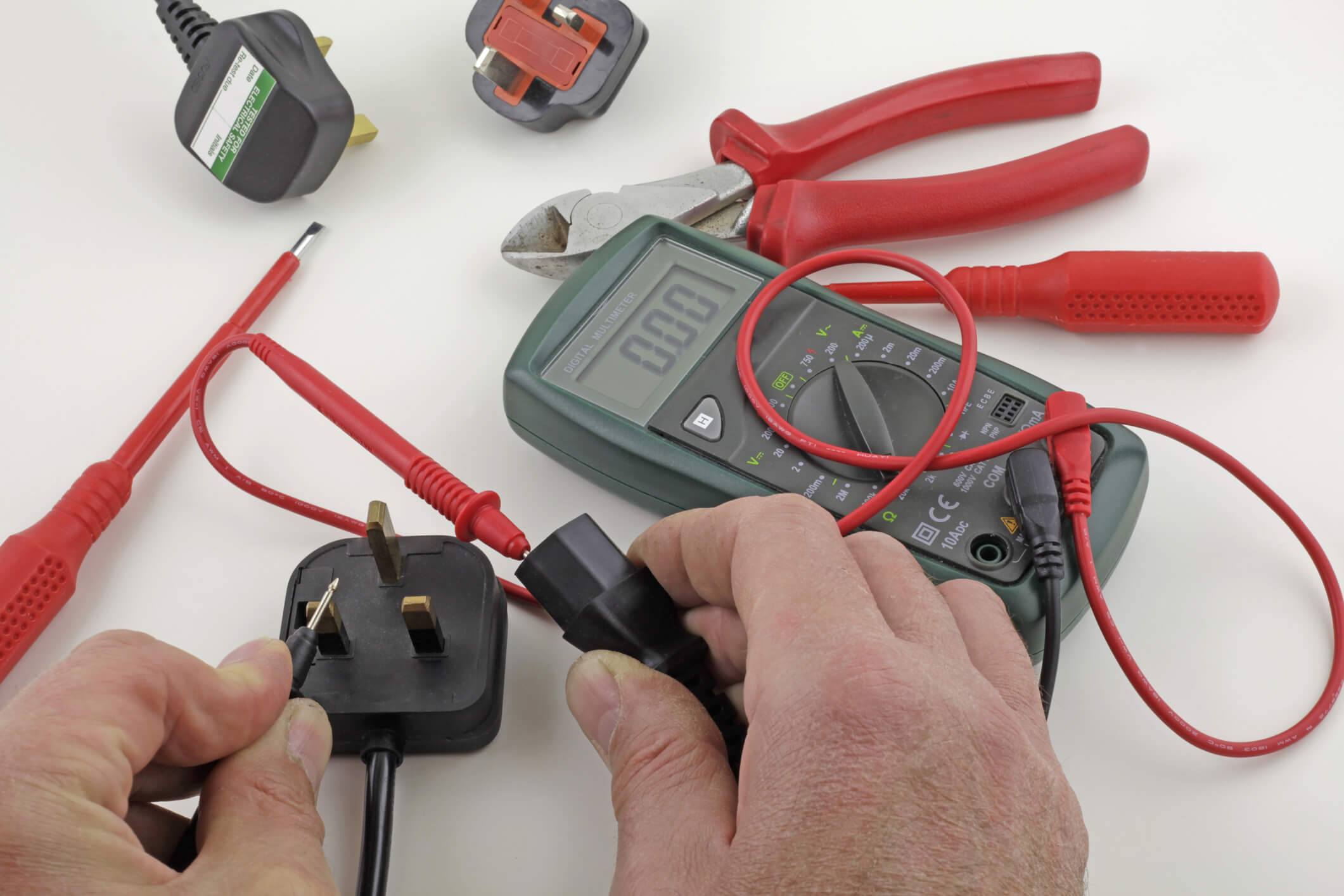20+ Years Experience
Specialist PAT Testing

As a business owner, ensuring the safety and functionality of your electrical appliances is crucial. The process of Portable Appliance Testing (PAT) helps to identify potential hazards and prevent accidents, saving you from legal and financial repercussions.
Ensuring safety through PAT testing involves following proper safety practices to prevent accidents and potential loss of lives. Here are steps to consider:
Ensuring that electrical equipment is safe through PAT testing is not only a best practice but also a legal requirement in order to comply with UK legislation and avoid legal consequences. Neglecting to fulfil electrical safety obligations can result in severe penalties, including fines or even imprisonment.
PAT testing, or Portable Appliance Testing, is crucial in protecting against electrical fires. Faulty appliances can cause devastating fires, resulting in property damage, injuries, and even fatalities.
In the worst case scenarios, these fires can quickly spread, endangering lives and causing extensive damage. By conducting regular PAT testing, potential faults can be identified and rectified, preventing accidents and ensuring the safety of individuals and property.
Maintaining compliance with regulations is crucial for businesses to ensure the safety of their employees and customers. PAT testing, or Portable Appliance Testing, helps in achieving this goal by inspecting and testing electrical appliances for potential faults or hazards.
By adhering to safety standards and the IET Code of Practice, businesses can mitigate the risk of electrical accidents and demonstrate their commitment to safety.
Qualified electricians play a vital role in maintaining the safety and functionality of electrical equipment in both residential and commercial settings. These trained professionals possess the necessary knowledge and expertise to thoroughly inspect, test, and certify electrical systems.
By enlisting the services of a qualified electrician, you can rest assured that your electrical equipment is being handled by capable hands. They can identify any potential hazards, ensure that the equipment meets safety standards, and offer recommendations for maintaining a secure housing environment.
With their expertise, they can help guarantee that your electrical equipment is of high quality and functioning effectively.
PAT testing specialists play a crucial role in ensuring the safety of electrical equipment and stationary items. They are trained to conduct thorough inspections and tests to identify any faults or potential hazards. By hiring a PAT testing specialist, you can have the peace of mind that your electrical appliances and stationary items are safe to use.
These experts have the knowledge and expertise to conduct tests according to industry standards, providing you with the best possible experience and ensuring that safety is a top priority. With their help, you can take a small measure that goes a long way in preventing accidents and maintaining a safe environment.
Visual inspection is a crucial step in PAT testing to ensure the safety and functionality of electrical products. Here are the steps involved:
By conducting a thorough visual inspection, potential hazards can be identified, and the use of inexpensive appliances or faulty electrical products can be avoided. PAT testing plays a vital role in maintaining electrical safety standards.
An earth continuity test is a crucial component of PAT testing (Portable Appliance Testing) for electrical equipment. It ensures the integrity of the equipment’s earthing connection, which is essential for safety. Here are the steps involved in conducting an earth continuity test:
Insulation resistance testing is a crucial step in the process of PAT testing for domestic appliances and equipment with specific mobility classifications. Here are the necessary steps involved in conducting an insulation resistance test:
Functionality testing is an important aspect of PAT testing that ensures the safe operation of all equipment and other appliances. Here are the steps involved in conducting a functionality test:
The frequency of PAT testing depends on the level of risk and potential hazards present in a specific environment. Environments with higher levels of risk, such as construction sites or factories, may require more frequent testing compared to low-risk environments like offices.
It is important to follow safety standards and regulations to determine the appropriate testing schedule in order to ensure compliance and mitigate any potential hazards. Seeking advice from a qualified professional can help determine the ideal frequency of PAT testing for your specific circumstances.
Remember, regular testing is crucial for maintaining electrical safety and preventing accidents. Stay proactive and prioritise safety by scheduling regular PAT tests.
The recommended PAT testing intervals may vary depending on the type and frequency of usage of the appliance. For high-risk equipment, such as power tools or kitchen appliances, it is recommended to conduct annual testing.
Medium-risk devices, like office equipment, should be tested every two years, while low-risk appliances, such as lamps or chargers, can be tested every four years.
By adhering to these testing intervals, individuals fulfil their obligations for electrical safety and reduce the risk of accidents or electrical faults.
Labelling and documentation are crucial aspects of PAT testing to ensure the safety of electrical appliances. To effectively carry out this process, follow these steps:
Pro-tip: Use standardized labels and document templates to streamline the PAT testing process and maintain consistency in labelling and documentation practices for electrical appliances.
When it comes to electrical safety, it’s important to determine whether to repair or replace faulty appliances. To help you make the best decision, here are some steps to follow:
PAT testing is important for landlords as it ensures compliance with electrical safety obligations, protects against penalties for non-compliance, and ensures the safety of tenants from potential hazards.
PAT testing is essential for upholding safety standards and providing good quality, safe housing for tenants. It also ensures that electrical products are legitimate and safe, particularly with the increasing number of counterfeit products in the market.
We Aim To Reply To All Enquiries With-in 24-Hours